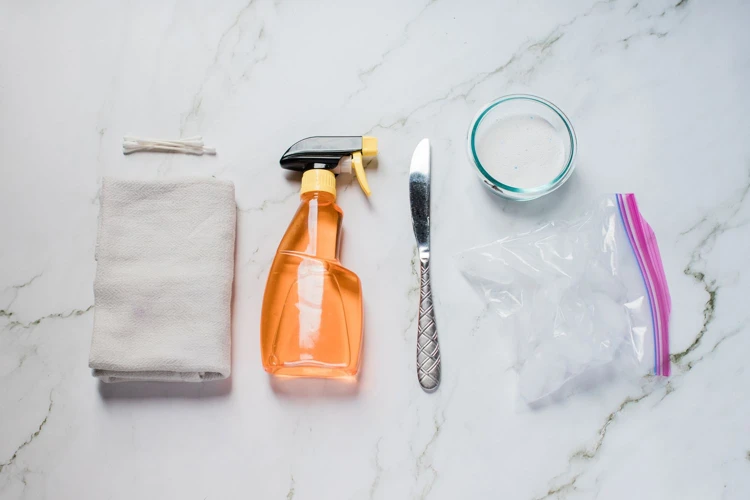Glue is an essential tool in both household and industrial applications, but it can also be a source of frustration when it ends up where it shouldn’t. Whether it’s a craft project gone awry or a simple accident, finding the right approach to remove glue stains can save the day, and quite possibly, your surfaces. This comprehensive guide will walk you through the various methods of how to clean glue from multiple surfaces effectively.
Understanding Different Types of Glue and Their Removal Techniques
Different adhesives require distinct glue removal techniques. Recognizing the type of glue is the first step toward a successful cleanup.
How to Dissolve Water-Based Adhesives
For water-based adhesives, such as white school glue, the solution is quite straightforward. Warm water and a gentle scrubbing tool are often enough to dissolve glue. If necessary, a mild detergent can assist in the process, ensuring the glue loosens up and can be wiped away.
Removing Sticky Residue from Super Glue and Other Cyanoacrylates
- Acetone-based nail polish remover
- Cotton swabs or soft cloths
- Gloves to protect your hands
Apply the acetone with care, dabbing it onto the affected area until the super glue softens and can be gently peeled off.
Cleaning Glue Off Wood: Tips for Woodworking Projects
Wood surfaces require a delicate touch. When cleaning glue off wood, it’s best to use a plastic scraper to avoid scratches. For stubborn residues, sanding lightly or using a specialized wood cleaner may be necessary, taking care not to damage the wood’s finish.
Glue Stain Removal from Delicate Surfaces Like Glass and Metal
For glass and metal, a razor blade can be effective for glue stain removal. However, always keep the blade at an angle to prevent scratching, and lubricate the surface with water or window cleaner.
Commercial Adhesive Removers and When to Use Them
There are situations where commercial adhesive removers are the best option, especially for tougher glues. These products are designed to tackle a wide range of adhesives, but it’s important to follow the manufacturer’s instructions closely.
Cleaning Glue from Fabric: Step-by-Step Guide
Removing glue from clothing and other fabrics can seem daunting, but with the right strategy, it’s a manageable task. Let’s delve into the specifics.
Pre-Treatment Tips for Glue Stains on Clothing
Before attempting to remove glue stains from clothing, scrape off any excess glue. Next, if the fabric allows, soak the item in cold water. Testing a small area first will ensure that the color and material won’t be damaged.
Remove Glue Stains from Delicate Fabrics Safely
Delicate fabrics require extra care. Avoid harsh chemicals and instead opt for gentle rubbing with a soft cloth soaked in warm water and mild soap. Patience is key; repeated gentle treatments are better than risking damage with aggressive scrubbing.
Special Considerations for Hot Glue and Rubber Cement
Hot glue and rubber cement present unique challenges. Placing the fabric in the freezer can harden hot glue, making it easier to peel off. For rubber cement, a dry-cleaning solvent used according to the label’s directions can be effective.
Adhesive Residue Cleaning: Household Items and Commercial Products
When tackling adhesive residue cleaning, numerous solutions are at your disposal, ranging from everyday household items to specialized products.
Using Common Household Items to Clean Glue Residues
- Vinegar
- Baking soda
- Olive oil
These items can be used alone or in combination to soften and remove glue residues. The mild acidic or abrasive properties of these substances can work wonders on a variety of surfaces.
Professional Glue Removal Products and Their Applications
For tougher jobs, professional glue removal products may be necessary. These are formulated to tackle specific types of glue and can be highly effective. Use these with caution and always according to the label’s instructions.
Clean Glue from Carpet: Effective Methods and Precautions
Carpets can be particularly challenging when it comes to glue spills. Nevertheless, with the right approach, you can restore your carpet to its former glory.
Immediate Actions to Take for Fresh Glue Spills on Carpets
Act quickly with fresh spills. Blot, don’t rub, to avoid pushing the glue deeper into the carpet fibers. Then, use a cleaning solution suitable for your carpet type to dab at the residue until it lifts away.
Techniques for Dried Glue: How to Soften and Remove
Dried glue requires a bit more effort. Softening the glue with a warm, damp cloth can make it easier to remove. For some glues, a solvent may be necessary, but always test it on an inconspicuous area first.
Removing Sticky Residue from Various Surfaces
Different surfaces demand different strategies for removing sticky residue effectively and safely.
DIY Solutions for Removing Sticky Residue from Plastic and Leather
Plastic and leather are sensitive to harsh chemicals. A mixture of baking soda and cooking oil can create a paste that gently lifts glue without harming these materials. Apply, let it sit, and then wipe clean.
Techniques for Cleaning Adhesive Residue from Concrete and Painted Surfaces
Concrete and painted surfaces can handle more robust cleaning solutions such as paint thinners or heavy-duty degreasers. However, caution is still advised to prevent discoloration or damage.
Dealing with glue can be sticky business, whether it’s on your hands, clothes, or floors. For comprehensive guides on tackling this adhesive problem, dive into our articles on how to clean glue in general, how to remove glue stains from various surfaces, and how to clean floor glue specifically. These resources will provide you with practical tips and tricks to make your cleaning tasks easier and more effective.
Conclusion: Key Takeaways for Effective Glue Removal
Mastery in glue stain removal comes down to understanding the nature of the glue and matching it with the appropriate cleaning technique. From delicate fabrics to robust concrete, each material requires a tailored approach. Remember to test cleaning solutions on inconspicuous areas, act quickly on spills, and be patient with the process. With these tips and techniques, you’ll be well-equipped to tackle any sticky situation.



